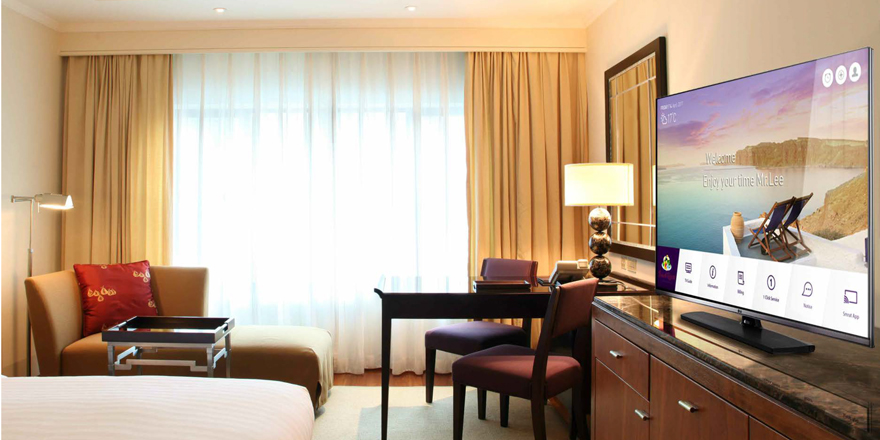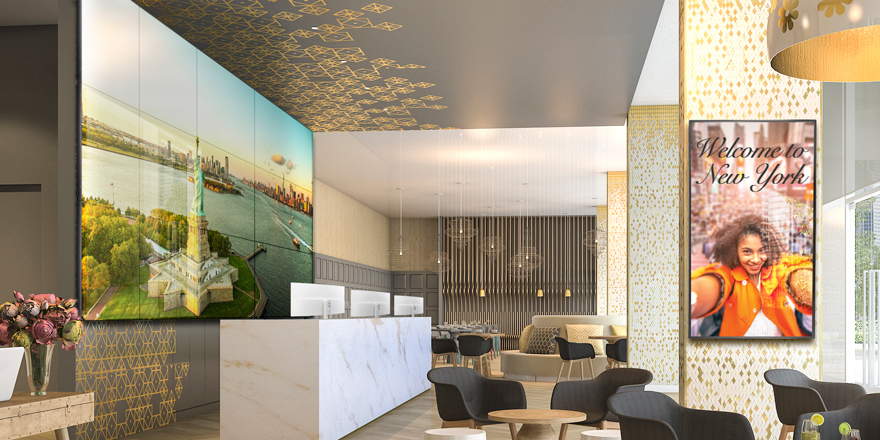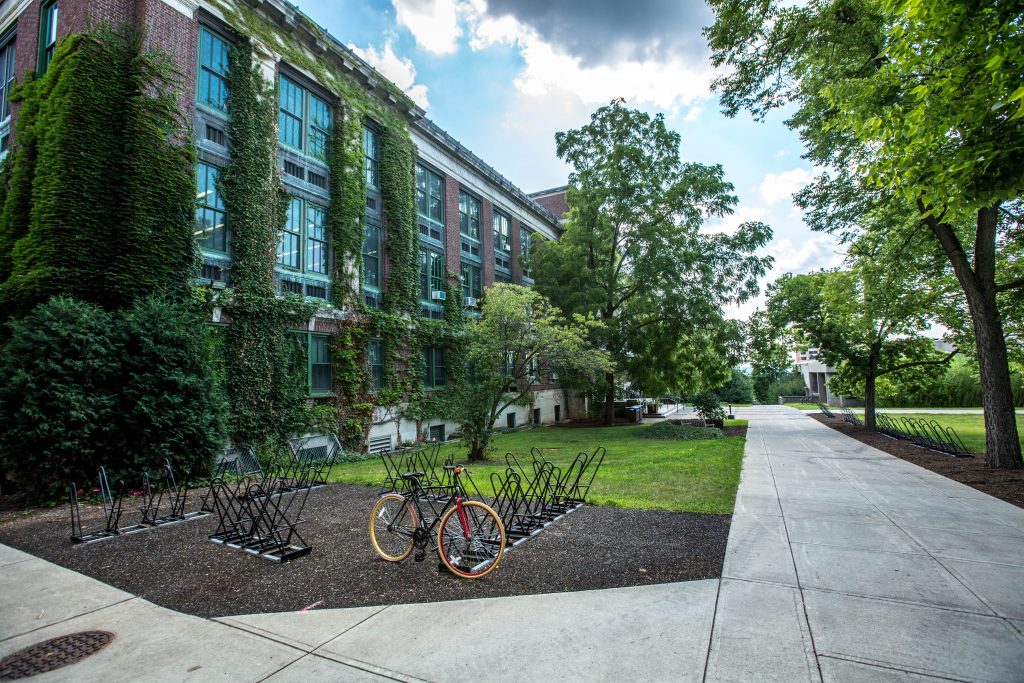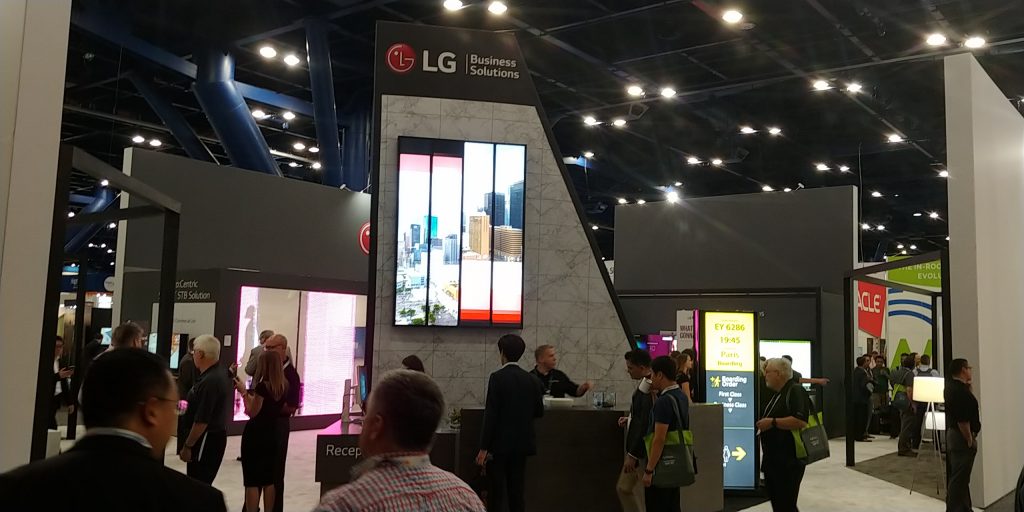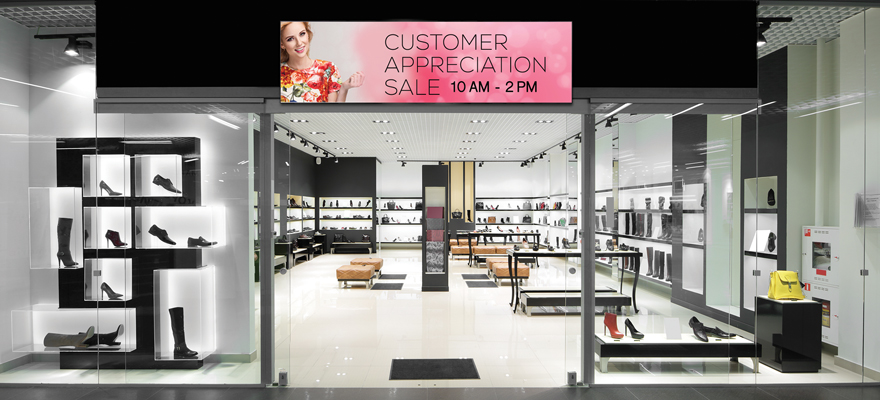We’ve all seen the rapid growth of large, dazzling video walls in public and private spaces – from airports to corporate offices to flagship retail to public venues and more. While the markets may be different the goal remains the same – to make a big impact with the message. Whether it’s a 2 x 2 video wall holding everyone’s attention in a conference room, a 3 x 3 with virtual workout classes in a fitness center, or hundreds of displays working together to create a colossal monument of digital goodness in a convention center, it’s important to know which technology is engineered to outperform the lesser brands and models, so you can choose a solution that is designed to engage and amaze wherever you place it. Here are a few guidelines:
Shrink those seams. The familiar “grid” of images in older video wall technology is distracting at best. In recent years technology improvements and engineering breakthroughs have allowed for thinner display bezels that create a fine line where the adjacent displays meet. The best video wall/flat panel display manufacturers offer bezel sizes in the “narrow” range: about 3.5 mm bezel width. And the top-tier manufacturers are making “super-narrow” bezel products with a bezel thickness of as little as 1.8 mm, and even “ultra-narrow” bezels of 0.6 mm which combine to create a virtually seamless video wall with a thread-like 1.2 mm bezel-to-bezel width.
Simplify content distribution. The old days of needing very expensive and specialized video processing hardware to tile content to a video wall are gone, but there is still some confusion about the kind of media player required to get content to a video wall in different A/V applications. Ideally systems integrators or end users should choose a video wall solution that gives the option to: A) use sophisticated video processing platforms to feed content to the video wall and provide for advanced features such as interactivity (touch screen, gesture control, facial recognition, etc.) if needed; or B) use a display’s built-in SoC (System on a Chip) to eliminate the need for media players and simplify the system design to save on hardware costs.
Maximize viewing clarity. Wait a minute. Isn’t the whole idea of a video wall supposed to create big, beautiful high-resolution images that command attention? Absolutely. But there is an additional technology that can take it to another dimension – the ability to extend that amazing image quality out to a wide viewing angle so people approaching from an off-center distance can be drawn into the experience. This is LG’s proprietary IPS (In-Plane Switching) technology, which enables a true 178-degree wide viewing angle where colors remain accurate, saturation is vivid, contrast is high and graphics are crisp even when viewing the displays from extreme angles. Think about how wide 178 degrees actually is and you’ll understand why the most powerfully effective video walls feature the IPS advantage and can grab so much more attention – you’ve got a massive video wall and you extend its impact out to almost sideways. That’s impact. Another IPS advantage is that the displays use less energy and run cooler. Considering the purpose of videowalls IPS can pay off in solid ROI on energy bills alone.
For your inspiration. Keep in mind that although the massive video wall shown in the video below is a one-of-a-kind, Guinness world-record holder, the same company that made it possible is ready to equip businesses of any size to make a big impact in their own space to customers, employees, visitors, guests and travelers. We have the products, the technology and the partners to create a turnkey solution and scale it to any proportion. FYI – next week we’ll tell you about calibrating the image across multiple displays.
Have a look at the world’s largest video wall.


